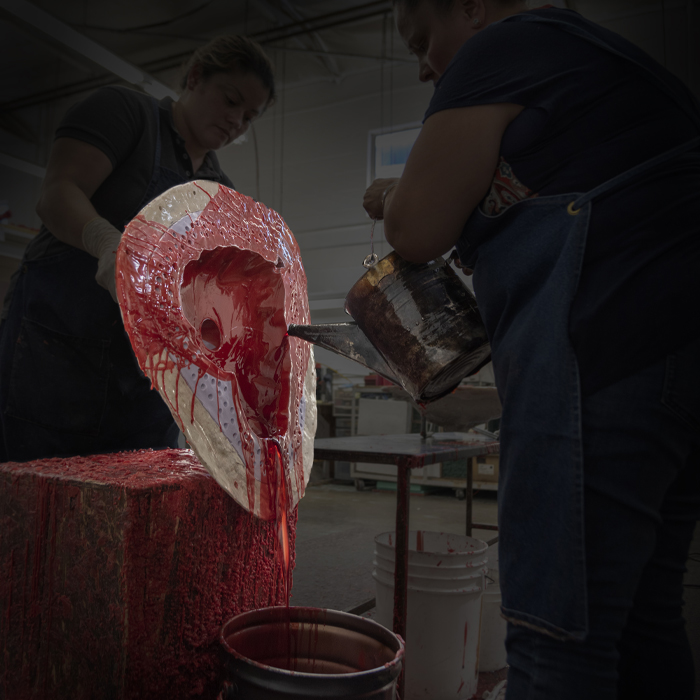During the pour, the ceramic shell mold receives the bronze. A huge graphite crucible, fired by a furnace, is filled with bronze ingots that are melted. The metal begins to melt at 1700ºF. Bronze “seizes” (stops flowing) when confronted with cold, which might occur if molten bronze was poured into a room temperature shell; therefore at the same time the bronze is being blasted by a natural gas furnace, the ceramic shell is heated in a kiln to approximately 1100ºF.
The Pour
When the pour begins, the crucible is lifted by a crane out of the gas furnace. At the same time, the glowing ceramic shells are brought out of the kiln to the pour area. Two artisans operate the crane that holds the crucible in a “jacket.” The artisan with the controls is the “lead pour” and the artisan maintaining the crucible balance is known as the “deadman.” A third member of the pour team pushes away dross and slag on the surface of the molten bronze. The entire pour is very fast and very precise; one crucible of bronze holds 400lbs and can fill one or two large shells or ten or more small shells. The first pieces poured are those with thin walls and intricate details which require hot, fluid bronze to move throughout the channel system.


